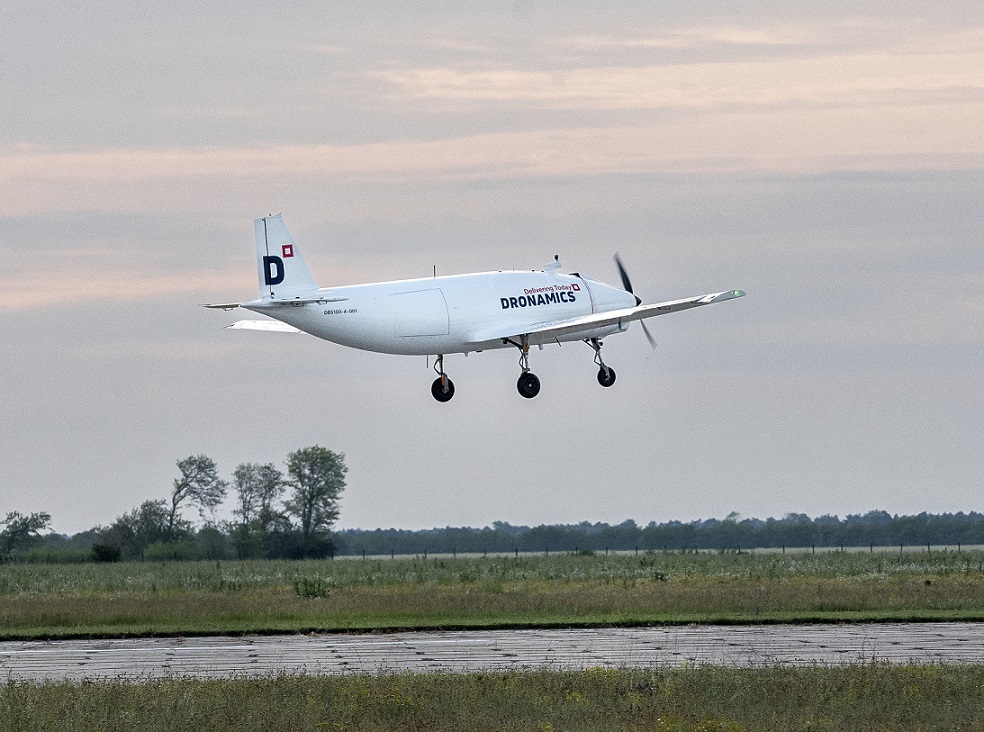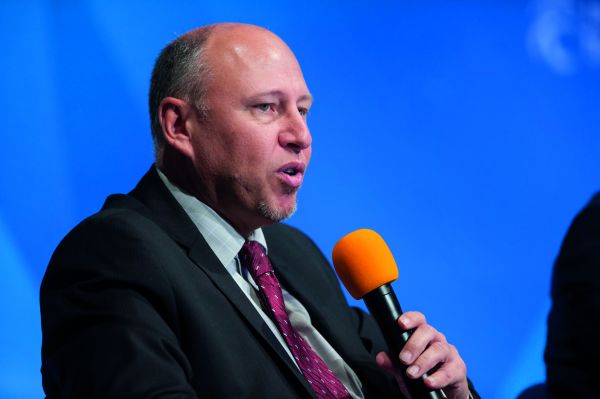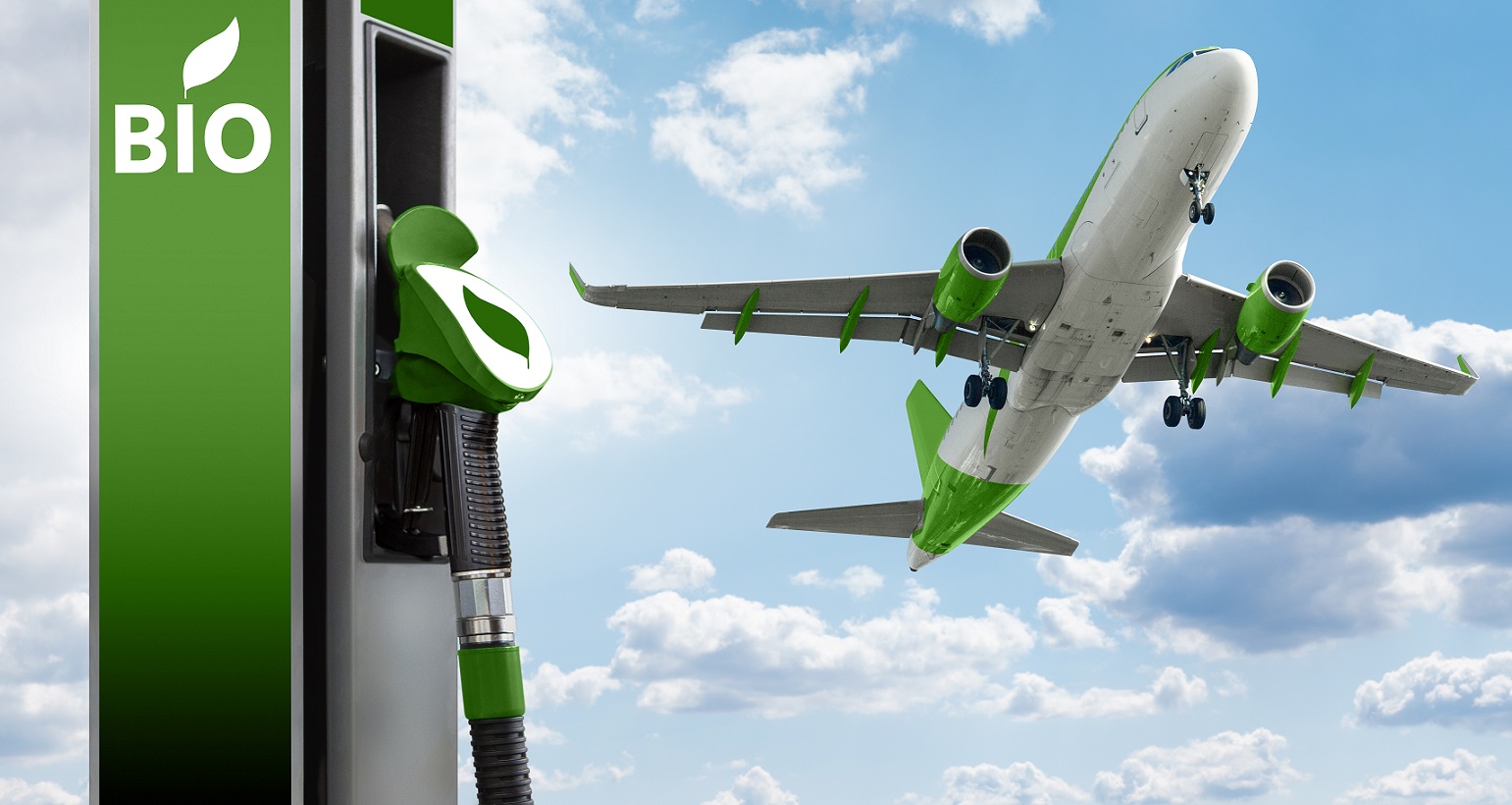Where now for air cargo?
02 / 08 / 2023

Source: Dronamics
“Firstly, I shall say that I have the pleasure to be looking at the future of the industry from the comfort of a beach hammock somewhere in the world,” Tiaca director general Glyn Hughes tells Air Cargo News (ACN) when he sits with us to share his thoughts on what the future holds for the airfreight industry.
Hughes holds a unique tie to this publication. He began his freighting career almost to the day when ACN published its first issue; 40 years in the future, he believes that the fundamentals of the industry will remain the same.
“It will still be moving things from one place to another,” he says. “But I feel everything around us will take leaps forward from where we are today.
“The industry will be fully digitalised, as will most aspects of our lives, so supply chains will be optimised and cash effective.
“By that I mean that only what is needed will be moved. AI will analyse our lives and predict what will be purchased by whom and when. So, speed and efficiency will be critical.”
To accommodate these changes, there is a perception that dominant manufacturing centres such as China may see volumes erode.
This would be in marked contrast to the present state of play, in which the People’s Republic finds itself responsible for 28% of all the world’s production output.
Hughes seems confident, though, that the days of this Asian powerhouse as the main global manufacturing site are over, noting that it will not simply be a case of China plus one, but “China plus two, plus three” and so on.
Should he be right, this will provide a shot in the arm for carriers, with increasing demand for capacity in underserved markets as production centres begin to disperse around the world.
Hughes is not alone in contending that one of the most dramatic shake-ups for airfreight will come from the external reorientation of the global economy.

Glyn Hughes
“Supply chains are being reshaped by geopolitical forces,” chief executive officer of Dronamics Svilen Rangelov tells ACN.
In fact, like Hughes – and ACN, of course – Dronamics is also celebrating something of a milestone.
2023 marks 10 years since Jeff Bezos’ announcement that the ubiquitous e-commerce behemoth he founded would be developing last-mile delivery drones.
It was this announcement, Rangelov says, that “inspired us at Dronamics to do something quite different”. Since then, how does he see things as having changed?
“The technology and regulations for cargo drones have advanced significantly in recent years, and it is just a matter of time before drones become an integral part of the cargo ecosystem,” he says.
“As drone technology continues to improve and regulations become more established, the wide adoption of cargo drones is the future.
“Supply chains are being reshaped and our cargo drone solution simplifies the regional movement of goods, which we are seeing more of. So, it’s a push-and-pull of forces.”
Since he has skin in the game, it is unsurprising that Rangelov sees drones as a big part of the future for airfreight.
And Hughes seems to share that faith. Asked whether he sees any opportunity for drones to stake their space in the sector, the Tiaca director general describes it as a “total opportunity”.
“Drone operations open up the industry to many more possibilities to serve the customer community,” Hughes adds.
“From rapidly delivering critical medical supplies to the delivery of gourmet meals to supporting remote villages with supplies to delivering e-commerce, the potential applications for this new class of aviation are significant and endless.
“The challenge is how we commercially integrate and leverage the existing airfields and air space for cohabitation in the sky.
“ICAO will play a leading role in establishing cross-border regulations to support that phase of drone operations growth.”
Others are more circumspect. Speaking to forwarders, you get the sense that they think the technologists and drone enthusiasts have not thought through the application of drones in a real-world setting.

Svilen Rangelov. Source: Dronamics
Recognising their viability for rural and remote deliveries, or for urgent medical deliveries, they – and other sources, of course – agree that there is scope for this. Looking at Dronamics, they think its drones will open up parts of the developing world that lack the traditional infrastructure of airports.
Asked if they represent the future of airfreight, though, one forwarder tells ACN that the idea of drones whizzing over the skies of London is “quite frankly, ridiculous”.
Ashwin Bhat, chief executive of cargo at Lufthansa, appears to have a similar belief in the limited range of work drones could be involved in.
“For short-range cargo flights with payloads under five tonnes, drones could offer an alternative,” he says. “But for long-range transportation between large and busy airports, this seems to lie in the distant future.”
Concurring, head of revenue management and network planning at Etihad Cargo Leonard Rodrigues says drones are the “hot topic” but that they remain “largely untested” and lack the capacity to transport large volumes on a single flight “making economies of scale challenging”.
Nonetheless, and like Bhat, Rodrigues believes there is short-term gain to be had from the emergent drone sector, seeing them as capability enhancing for “smaller loads oracross smaller distances”, he tells ACN.
“Whether drone technology will develop to enable the safer, more efficient piloting of the current in-service cargo fleet remains to be seen,” Rodrigues continues.
“While we anticipate significant barriers to entry for larger-capacity unmanned aircraft, as the ecosystem for the secure handling and air traffic management for crewless flights does not currently exist, our sector is evolving and adapting all the time, so this may become a reality in the longer term.
“Drones definitely present an opportunity, constrained only by regulatory limitations that will be lifted gradually.
“Etihad Cargo is in the exploratory innovation phase of looking at how drones could be used to enhance our current capabilities, which means a strong first-use case will pave the way for this opportunity.”
If drones remain “distant”, what is nearer? Young people, Bhat says. And with that focus on youth, he stresses that the future for air cargo is inherently one premised on sustainability above all else.
In this sense, he believes, like Hughes, that the future will not be revolutionary: the fundamentals of freight will remain the same, but the underlying ethos will change.
“Let’s be very clear, you won’t be able to attract the younger generation if you are not in the area of being sustainable because they want to work with companies and organisations that are ethical and are contributing to communities and the wider world,” Bhat says.

Ashwin Bhat. Photo: Lufthansa Cargo
And the industry is certainly making the right noises on this front – although concrete steps are a little harder to detect. Keeping in line with IATA industry targets, Etihad Cargo has committed to achieving net-zero carbon emissions by 2050.
In its push towards achieving this, while meeting increased capacity demand for e-commerce goods, Rodrigues says the carrier has been developing and adopting sustainable practices across its operations.
“In 2022, Etihad Cargo became the first Middle Eastern carrier to join TIACA’s BlueSky sustainability verification programme and achieved an advanced rating for the decarbonisation objective.
“This demonstrated our progress in investing in and deploying sustainable aviation fuels [SAF], upgrading aerial fleets and ground vehicles to reduce carbon emissions, reducing energy consumption across our operations, and optimising fleet utilisation,” he continues.
“SAF is certainly a cause for hope that the sector will be able to meet its green commitments. In 2022, in partnership with net-zero solutions provider World Energy, we operated the first net-zero flight powered entirely by Sustainable Aviation Fuel Book &Claim, and DSV Global Transport and Logistics became our first partner to purchase SAF to offset the carbon emissions of its cargo shipment.”
Rodrigues’ comments open up an additional question on the future of air cargo: is there space for e-commerce in it?
In addition, if air cargo’s future is dependent on being sustainable, does Rodrigues believe there is any stock in the notion that e-commerce is antithetical to this? His answer is a resounding “no”.
“E-commerce itself is not inherently unsustainable, and carriers have the opportunity to rephrase the challenge of unsustainability as a decision to invest in the future and make operations more sustainable,” he continues.
“Driven by the need to go green and the commitment of a number of carriers to reach net-zero emissions, the market will likely regulate its need and we will find a balance.
“It is also worth noting that the transportation of goods generates fewer carbon emissions than the incorrect localisation of production.
“To achieve higher levels of sustainability, products need to be produced in places using processes that minimise overall carbon emissions. Therefore, the impact of transportation, while not zero, is secondary compared with the manufacture of goods and products in minimising carbon emissions.”
But does Rodrigues see other potential routes to a sustainable air cargo future?
“Electrification,” he suggests – but he warns that innovation in that field is limited at the moment.
As a result, electrification’s potential remains dependent on a surge in investment and the development of far more ambitious projects, if it is to have the same potential asSAF.
Crucial to any future change, though, Hughes says, will be the development of technical and operational standards, “critical to support fledgling industries” that will allow the collective to develop in tandem from a shared base.

Photo: Shutterstock
Typically, all industries are resistant to regulation, seeing it as a potential roadblock to development, innovation, and success.
Rodrigues says this perceived reluctance to change could be more a function of the high cost of adoption of standards and new technology.
Therefore, he adds, doubts over new regulations could be a matter of timing, with willingness to adopt dependent on the cost of adoption falling to an acceptable level.
In Rangelov’s view, willingness to embrace new regulations may be seeing something of a sea change.
“With advancements in technology, the increasing availability of data, and the climate urgency, the industry is making some important steps towards regulation embracing innovation while upholding the highest standards of safety,” he says.
Fast movers
Does Rangelov’s receptiveness to regulatory changes place him among the category of “innovator” that Hughes considers as so important in the regulatory landscape?
“As industries mature, the need for standards tends to get focused on regulatory compliance, safety and security provisions but operational differentiators often are established by those who can innovate and adopt new ideas the quickest,” Hughes continues.
All those who ACN spoke to share in the sentiment that the past decade has witnessed major strides in the development of the industry.
There have been much stronger commitments to digitalisation, the industry has become far more vocal in its support for greener operations, and there seems to be greater productivity in innovating – rather than relying on what one industry source described as air cargo’s “Rube Goldberg” approach to operations.
For his part, Hughes says the combination of great innovation that the sector is now seeing, combined with a willingness to regulate, will “hopefully lead to hyper innovation, which will take our industry significantly further forward”.
What, then, does that future “hyper innovation” look like? Rodrigues has some ideas.
“What if technology could make cargo more like passengers? Today, passengers get themselves to the airport, they are responsible for their own documents, and they board the aircraft,” he concludes.
“This is in contrast to cargo, where stakeholders are tasked with facilitating every move.
“Greater adoption of automation and smart technology has the potential to make cargo more autonomous, utilising digital tools to enable it to carry out self-reporting, provide greater trackability and create a more seamless experience.
“Cargo would essentially become more like passengers, capable of playing a greater role in its own journey and setting the stage for more meaningful interactions between the actors within the supply chain, including the shipment itself.”














